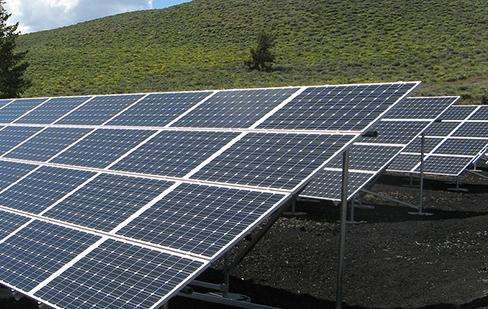What are the installation methods for solar panels?
Solar panels are devices that convert solar energy into usable electricity. Installing solar panels can provide clean, renewable energy to homes or industrial facilities. Before installing solar panels, you have the choice of several different installation methods, each suitable for different installations and environmental conditions.
1. Rooftop Installation
Installing solar panels on the roof of a house is the most common installation method. Rooftop installation can utilize the open area of the house and has the advantages of high efficiency and simple installation. Roof installation can be divided into two methods: sloping roof and flat roof. For sloping roofs, solar panels can be installed directly between the tiles, or a sSpecial support for solar panels can be installed on roof trusses. For flat roofs, solar panels can be mounted on a series of brackets, allowing them to be tilted for optimal solar radiation.
2. Ground installation
If the roof of the house is not suitable for installing solar panels, you can consider installing them on the ground. Ground installation can be carried out in any open area such as a lawn, garden or other uncovered ground. Ground installation can use a special bracket system that tilts the solar panels for optimal solar radiation, and the brackets can be adjustable to better adapt to environmental changes.
3. Post-installation
Pole installation is a less common installation method, suitable for occasions where solar panels need to be installed away from buildings and the ground, such asisolation areas. or rural areas. The columns can be made of materials such as wood or metal, and the solar panels are connected to the ground via the column system. Pole mounting can be adjusted in all directions to maximize solar energy usage.
In summary, choosing the right solar panel installation method requires considering many factors, including the available area, how to adjust the angle, environmental conditions, etc. Depending on the actual situation, the optimal installation method can be selected to maximize the utilization of solar energy and achieve the greatest energy saving benefits.
EVA is a hot melt adhesive with a thickness between 0.4 mm and 0.6 mm. It has a flat surface, uniform thickness and contains a cross-linking agent. It is non-sticky and non-sticky at room temperature.After some adjustment and hot pressing, fusion bonding and cross-linking will occur and it will become completely transparent.
Solar laminates or solar panels are made of monocrystalline silicon cells or polycrystalline silicon cells, ultra-white tempered glass, TPT and EVA, which are therefore laminated together at high temperature by a solar panel laminator. the name solar laminate.
Detailed information:
1. Production process
Chapter One-step single-chip soldering: Solder the battery slices to the interconnect strips (tin-plated copper strips) to prepare for series connection of the battery slices.
The second step of series welding:Connect the battery cells in series according to a certain number.
The third step of lamination: continue the circuit connection of battery and prot chainsAt the same time protect the battery sheets with glass, EVA film and TPT backsheet.
The fourth step is lamination: glue and fuse the battery sheet, glass, EVA film and TPT backsheet under certain conditions of temperature, pressure and vacuum.
Step 5: Framing: Use an aluminum frame to protect the glass and make installation easier.
The sixth step of cleaning: ensuring the appearance of the components.
Step 7 Electrical Performance Test: Test the insulation performance and power output of the components.
Finally packed and stored.
2. Power generation principle
The working principle of n/p-type crystalline silicon solar cells: when p-type semiconductor and n-type semiconductor are closely combined and connected together. , at the intersection of the two, a p-n junction forms at the interface. When the photo cellovoltaic is illuminated by sunlight, positive and negative charges accumulate on both sides of the p-n junction, generating photovoltage and forming an integrated electric field. This is the “photovoltaic effect”.
Theoretically, at this point, if the electrodes are removed from both sides of the built-in electric field and connected to a suitable load, a current will be formed and power will be obtained on the load. Solar cell modules are solid-state devices that use the electronic properties of semiconductor materials to achieve photovoltaic conversion.
Baidu Encyclopedia - Solar Panel Components
Baidu Encyclopedia - Solar Laminates














